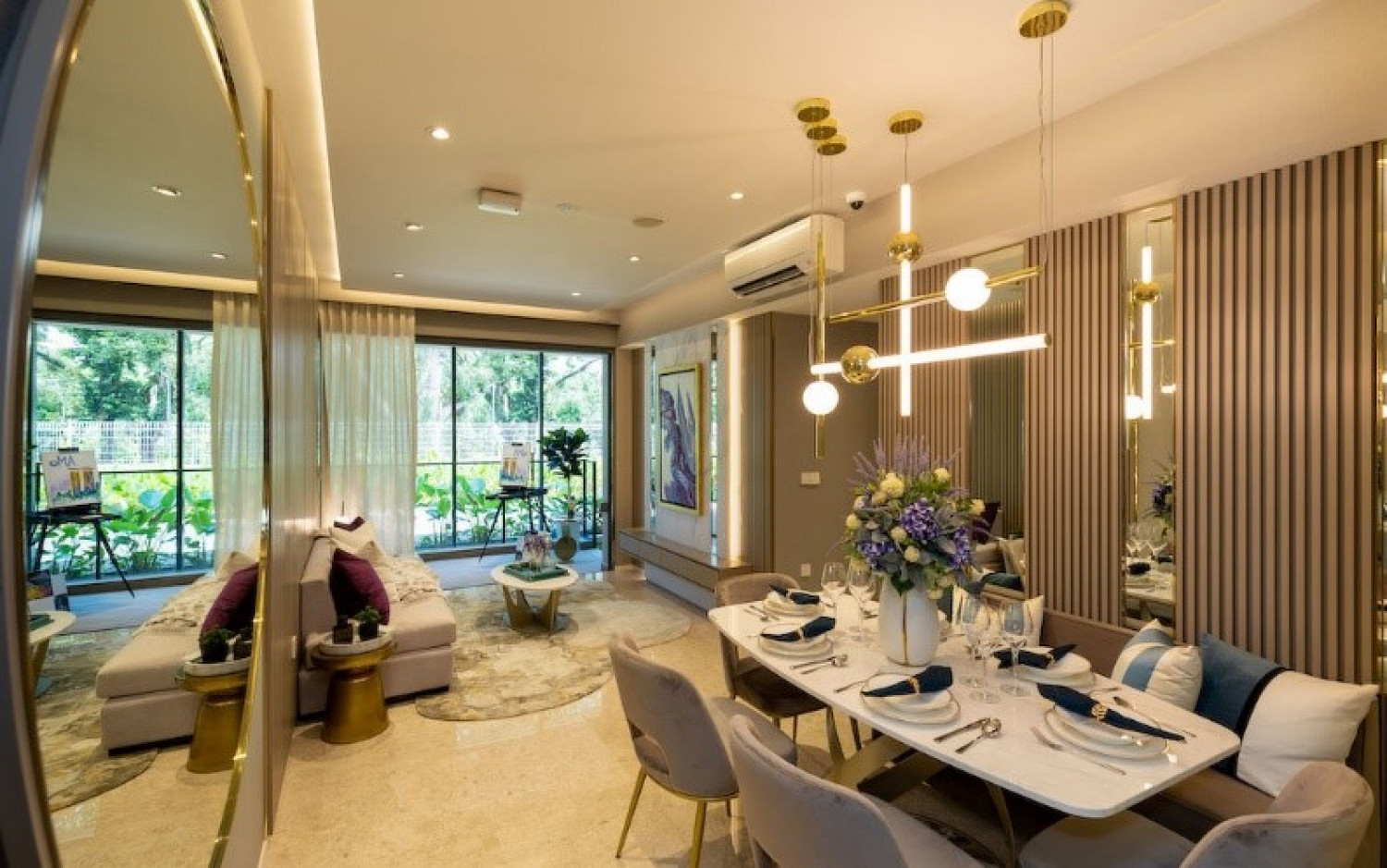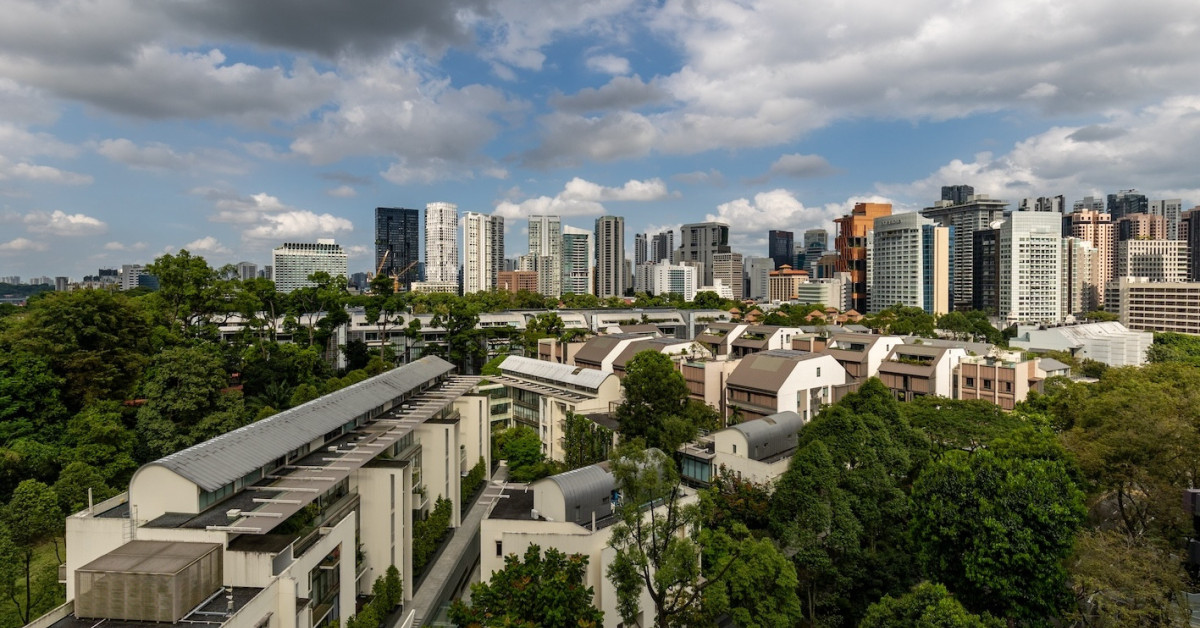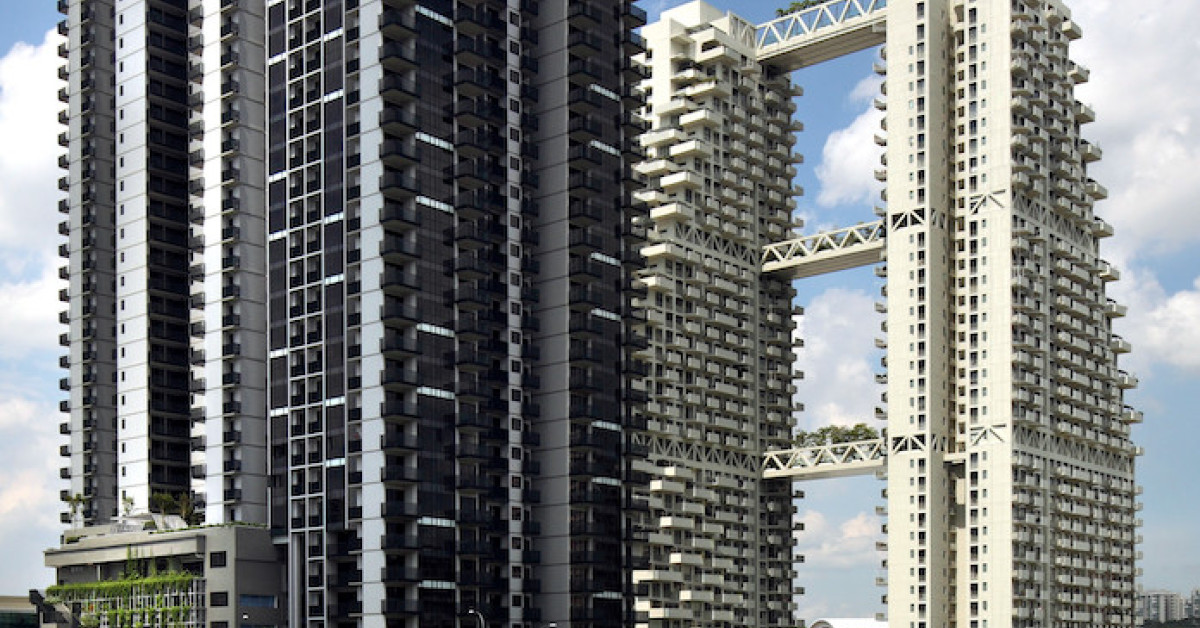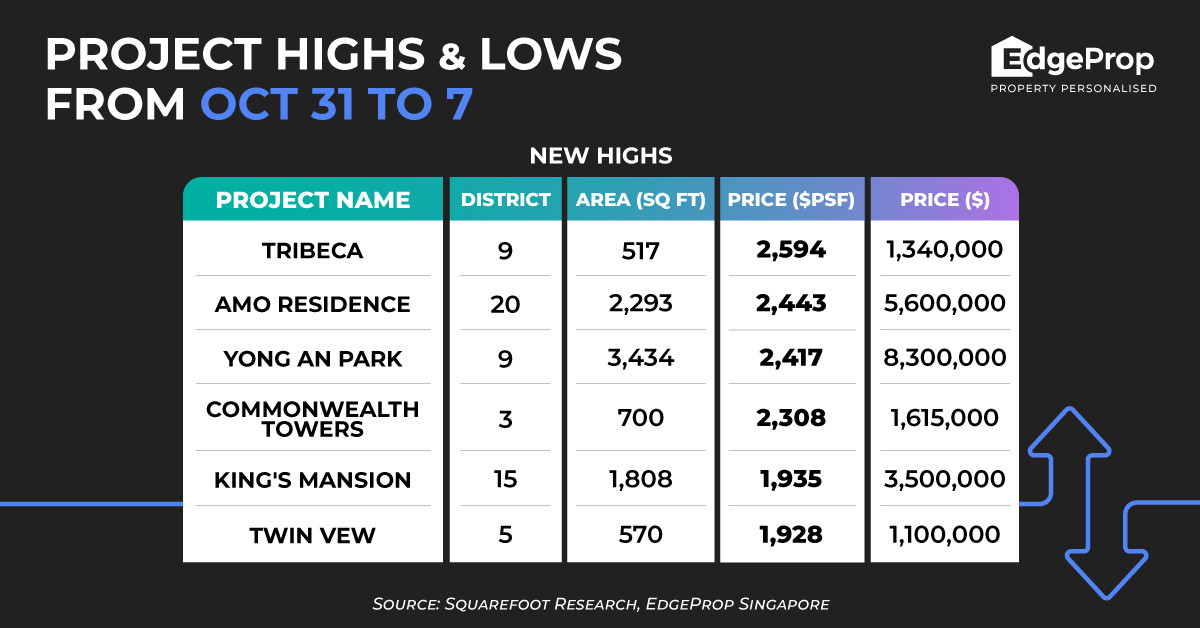ANALYSIS: The evolution of condo sizes over the years
By Elizabeth Choong
/ EdgeProp Singapore |

Showflat of a three-bedroom unit in AMO Residence (Photo: Samuel Isaac Chua/ EdgeProp Singapore)
Ask Buddy
View sale transactions for Amo Residence
Are there unprofitable transactions in Sky Habitat?
Show me condo listings in District 20
Any profitable transactions in Sky Habitat?
Recently launched projects
View sale transactions for Amo Residence
Are there unprofitable transactions in Sky Habitat?
Show me condo listings in District 20
Any profitable transactions in Sky Habitat?
Recently launched projects
Singapore (EDGEPROP)- Homes in land-scarce Singapore are generally compact to balance the limited available land for residential use with buyers' need for sufficient space to live comfortably. Developers tend to build a variety of condo unit types and sizes to appeal to a wide pool of buyers.
To determine which direction condo unit sizes are heading, we conducted an analysis of condo units that were sold over the past 20 years. We also performed an analysis to determine how median sizes for each market segment and region have changed over the years.
From our analysis, we made several key observations.
- Generally, transacted condo sizes have shrunk over the years.
- This is primarily driven by smaller household sizes and affordability as smaller units are relatively more affordable (in terms of total price) compared to larger units.
- However, there is a small reversal during the pandemic, with buyers generally preferring slightly more spacious units
- Newer condos are generally smaller compared to resale condos, hence buyers looking for larger spaces tend to opt for resale developments.
- Surprisingly, condo sizes in RCR have the smallest units due to numerous transactions of small units in Geylang.
- Condo units in the North and West Regions tend to have larger median sizes, which will be more suitable for large or multi-generation families.
Advertisement
Advertisement
Median size bucked the trend during the pandemic
Based on data from URA Realis, the median size of condo units that were sold since 2003 has indeed declined. The average median size for condo units sold from 2003 to 2012 was 1,206 sq ft, which is 20.6% higher than the average median size of 958 sq ft for 2013 to 2022.
It is notable that in 2013, the median size for transacted condo units fell below the 1,000 sq ft threshold for the first time, reaching 947 sq ft. This occurred despite government guidelines introduced in 2012 that discouraged the development of shoebox units.
It is also noteworthy that the median size of condo units sold during the pandemic increased. The median size was 904 sq ft in 2019 before rising to 926 sq ft and 947 sq ft in 2020 and 2021, respectively. This increase in median size for condo units transacted during the pandemic could be driven by homebuyers' need for more spacious homes to accommodate work-from-home and home-based learning arrangements.
The median size further increased to 980 sq ft in 2022 before declining to 893 sq ft this year. This marks the first time that the median size has dipped below 900 sq ft. The shift back towards smaller units can be attributed to several factors, including shrinking household sizes and the increasing number of single-person households in Singapore.
In 2012, the average household size was 3.53 persons, but it dropped to 3.09 persons last year. Furthermore, the number of single-person households surged from 109,500 in 2012 to 217,300 last year. The increase in single-person households could be influenced by more single professionals purchasing their own homes for privacy and space as flexible work arrangements become the norm for more companies.
The decline in household size means that smaller condo units will be in greater demand, which could explain the higher sales volume for such units. To meet the market demand, developers have launched more small units. Furthermore, developing more of such units would allow developers to maintain their unit prices at a profitable level while keeping the total price at a palatable level for buyers.
Advertisement
Advertisement
Comparing Sky Habitat and AMO Residence
Sky Habitat and AMO Residence are 99-year leasehold condos in district 20. Sky Habitat received temporary occupation permit (TOP) in 2015 while AMO Residence is still under construction. Additionally, there were 47 new sales for Sky Habitat in 2012 while the same number of new sales was recorded for AMO Residence last year.
Units between 1,200 to 1,400 sq ft accounted for 37.9% of the total number of units in Sky Habitat. The two-bedroom units in the development range from 872 to 1,410 sq ft while the three-bedroom units range from 1,216 to 1,894 sq ft.
However, units of 1,200 to 1,400 sq ft accounted for only 12.4% of the total units in AMO Residence. Almost half (49.5%) of the units in AMO Residence are between 600 to 800 sq ft which are made up of mainly two-bedroom units. The three-bedders in AMO Residence are smaller than those in Sky Habitat, ranging in size from 958 to 1,141 sq ft.
Median size expected to decline further
Our analysis of sales transaction data from URA Realis indicates that the median size of new condo units is declining more sharply compared to their resale counterparts.
The average median size for the 10-year period from 2013 to 2022 was merely 777 sq ft for new condo units, compared to 1,182 sq ft for resale units. The disparity is smaller for the previous 10-year period (2003 to 2012), namely 1,125 sq ft for new units and 1,288 sq ft for resale units.
The average median size for new units fell by 348 sq ft or 30.9% during the two time periods. In contrast, the average median size for resale units dipped by 106 sq ft or 8.2% during the same timeframe. The difference in the rate of decline for both types of condo units supports the common assumption that new units tend to be smaller than older resale units.
Advertisement
Advertisement
There are several implications for homebuyers. Those who are looking to purchase a large condo unit would need to compromise on the age of the condo development. They will have to turn to the resale market, which will have more big units, instead of buying a brand new unit from the developer.
The median size of resale units is expected to get smaller as the latest batch of new units becomes available in the resale market. As such, future homebuyers may have to contend with a smaller home or look to even older developments for a larger home.
However, this presents an opportunity for developers to build more units that are bigger and hence suitable for large or multi-generation families. Such large units will be very appealing to buyers if the development is located in a family-oriented neighbourhood or near a reputable primary school.
Core Central Region does not have the smallest median size
Contrary to the assumption that the condo units in the Core Central Region (CCR) will have the smallest median size, the units in the Rest of Central Region (RCR) actually have the smallest median size.
Based on sales transactions for this year, the median sizes for condo units in both CCR and the Outside Central Region (OCR) are 915 sq ft, which is higher than the islandwide median size of 893 sq ft. Transacted condo units in RCR have the smallest median size of 818 sq ft.
This could be because the overall median size for RCR is reduced by numerous transactions of small condo units in the Geylang Planning Area, which forms part of the region. Last year, 1,470 condo units of 500 sq ft and below were sold, and Geylang accounted for 11.3% (166 units) of the transactions. This year, there were 1,015 sale transactions of such units, with Geylang accounting for 13.4% (136 units) of the transactions. Furthermore, Geylang had the most transactions of such small units compared to all other planning areas for both years.
However, the decline in median size is more rapid for transacted condo units in CCR compared to the other two market segments as well as islandwide. The difference becomes more obvious when comparing their most recent five-year averages.
The average median size for CCR fell the most at 8.8% (103 sq ft) when comparing the averages for the five-year periods starting in 2013 and 2018. In comparison, the average median size for RCR and islandwide fell by 5% (46 sq ft) and 2.7% (26 sq ft), respectively. The average median size for OCR bucked the trend by inching up by 0.4% (4 sq ft).
Head north or west for larger condo unit
The median sizes for sold condo units in all five regions are below the 1,000 sq ft threshold this year. Unsurprisingly, the units in the Central Region have the smallest median size at 861 sq ft, followed by the North-East Region at 872 sq ft. These two regions are the only ones with median sizes below 900 sq ft.
Based on sales transactions for this year, the condo units in the East Region have the largest median size of 969 sq ft, followed closely by the North Region with 963 sq ft. The West Region takes the third spot with 904 sq ft.
It is notable that the median sizes for transacted condo units in the North Region have declined the least over the years. From 2003 to 2022, the median size for the North Region has decreased by 13.6%. The largest decline comes from the North-East Region, which experienced a fall of 27% over the same timeframe.
Furthermore, a comparison of five-year averages reveals that the North and West Regions have actually experienced a recent uptick in the average median size. The most recent five-year (2018 to 2022) average median sizes for the North and West Regions were 977 sq ft and 1,003 sq ft, respectively, up from the previous five-year (2013 to 2017) average of 921 sq ft for the North Region and 995 sq ft for the West Region.
Moreover, the West Region is the sole region with an average median size above 1,000 sq ft for 2018 to 2022. In contrast, the North-East Region is the only region with an average median size that is less than 900 sq ft for the same timeframe.
As such, large families should consider the North and West Regions, where there are more transactions for large condo units. Furthermore, the completion of the first three phases of the Thomson-East Coast Line has significantly improved the connectivity of the North Region to the CBD and the city centre. Meanwhile, the West Region is expected to benefit from the government's plans for the Jurong Lake District and Tuas Port, as well as the future Jurong Region Line.
Large families with a modest housing budget might prefer the North Region because the average prices for condos in the North Region consistently trend below those in the West Region. The current average prices for condo units in the North and West Regions are $1,532 psf and $1,997 psf, respectively, which translates to a difference of $465 psf.
The average price disparity between the two regions is more significant when comparing transactions for condo units that are at least 2,000 sq ft. The current average price for such units in the West Region is $1,467 psf, which is $502 psf higher than the average price of $965 psf for their counterparts in the North Region.
Buyers who prefer a more compact home might want to look to the North-East or Central Regions. Budget-conscious buyers might prefer the North-East Region because it offers more affordable options. The current average price for condo units in the North-East Region is $1,442 psf, which is $856 psf lower than the average price of $2,298 psf for condo units in the Central Region.
However, the price difference between both regions for condo units of 500 sq ft and below drops to $690 psf. The current average prices for such units in the Central and North-East Regions are $2,293 psf and $1,603 psf, respectively.
Check out the latest listings for Sky Habitat, Amo Residence properties
Ask Buddy
View sale transactions for Amo Residence
Are there unprofitable transactions in Sky Habitat?
Show me condo listings in District 20
Any profitable transactions in Sky Habitat?
Recently launched projects
View sale transactions for Amo Residence
Are there unprofitable transactions in Sky Habitat?
Show me condo listings in District 20
Any profitable transactions in Sky Habitat?
Recently launched projects
https://www.edgeprop.sg/property-news/analysis-evolution-condo-sizes-over-years


Follow Us
Follow our channels to receive property news updates 24/7 round the clock.
Subscribe to our newsletter
Advertisement
Advertisement
Advertisement
Top Articles
Search Articles


